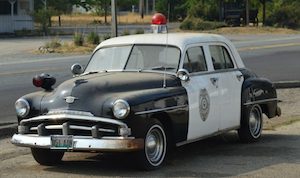Since 1993
Police Pat Down Goes Too Far

If you’re even half awake, you’ve noticed all the fuss about the intrusive TSA pat-downs in airports. Well, the government fondling its citizens doesn’t end there. Some people don’t like to be touched (especially movie stars, mentally ill patients, etc), but pat-downs are a necessary evil, even in the most free society on earth.
The question for the day is, how far can the government go on these pat-downs? I know this question has been keeping you up at night, so let’s dig right into a real life example in which an appeals court was forced to step in and draw the line. The case is Santiago v. State, 84 So.3d 455 (Fla. 4th DCA 2012). Santiago was convicted of burglary and grand theft. Basically, the burglary of a dwelling and grand theft evidence was found during a police pat-down after stopping an extremely nervous Santiago behind a home nearby the burglary. Santiago agreed to the pat down (who wouldn’t when confronted with armed guys wearing “POLICE” shirts?).
During the police pat-down of Santiago, the officer noticed several large objects in his pant legs, and some large bumps on his back pocket. The officer testified that he also knew these items were not weapons. The officer then reached into Santiago’s pants and removed a camera, two iPods, a watch, and some cash. So, did the officer have a right to remove these items?
First of all, before we get to the removal of the stolen goods, did these officers even have the right to stop Santiago? That’s always our first question–assuming we have read the Constitution, of course. The appeals court thought this stop was legit, based upon several factors we don’t have the time to consider at this moment. So, step two is, was the pat down of Santiago legal? No, here’s why.
Pat downs of citizens are permissible only when police believe a suspect is armed with a dangerous weapon. And, when a suspect is nervous and has bulges in his clothing (both of which described Santiago), some Florida courts have upheld pat-downs. But, did the police in this case have any reason to believe Santiago was “armed with a dangerous weapon?” After all, it is the reasonableness of that “belief” that is often at issue.
In Santiago’s case, the appeals court found that there was no testimony from the officer that would indicate Santiago was armed with a dangerous weapon. So, the convictions for burglary and grand theft were overturned. But, what I like about this decision is that the court hammered the government on several issues beyond the illegal pat-down. The court was also not convinced that Santiago’s consent to the pat down was voluntary, noting that “the consent given was nothing more than acquiescence to a show of police authority”. Id at 458.
The appeals court simply bought nothing the State was selling: “[e]ven assuming the officer’s pat-down was permissible, a stop and frisk may not extend beyond a pat-down of a suspect’s outer clothing unless the officer concludes that the suspect has a weapon.” Id at 459. Beautiful. The age old question, how far can you go? This puts the brakes on aggressive cops, who cannot claim with a straight face that an iPod or camera “feels like a weapon”. In this case, the officers didn’t even know what was stolen from the burglarized home, so these items were not suspicious, with the court stating “it is significant that before the pat-down occurred the officer had no description of the suspect or any items that may have been stolen during the burglary”. Hum.








